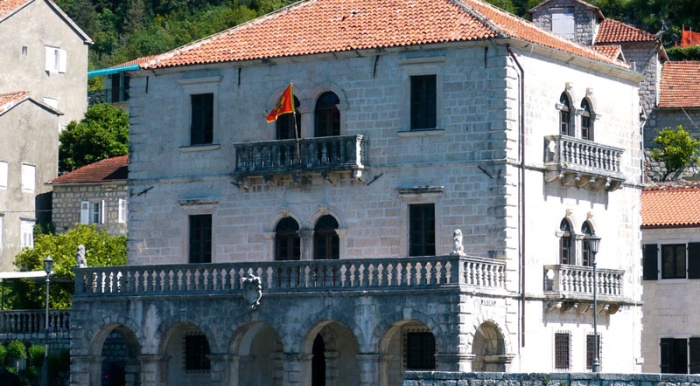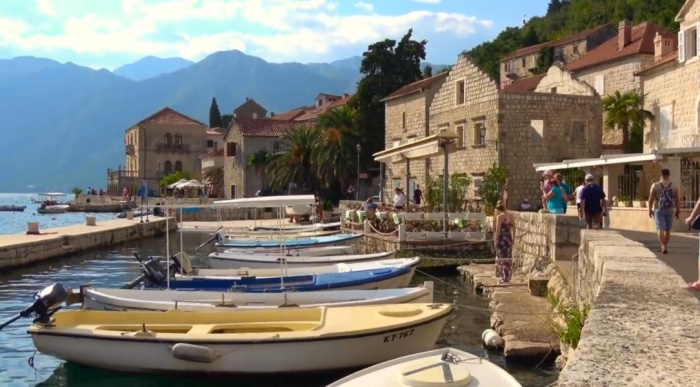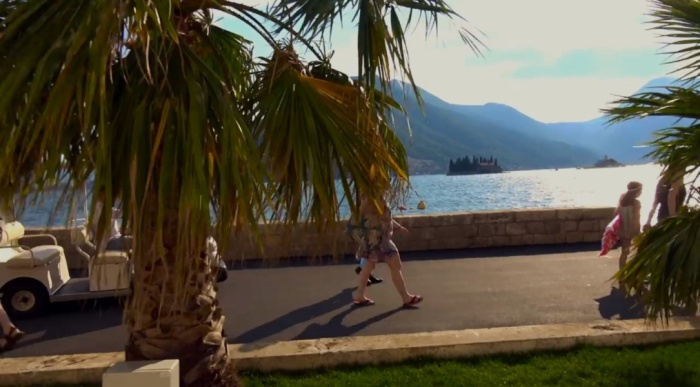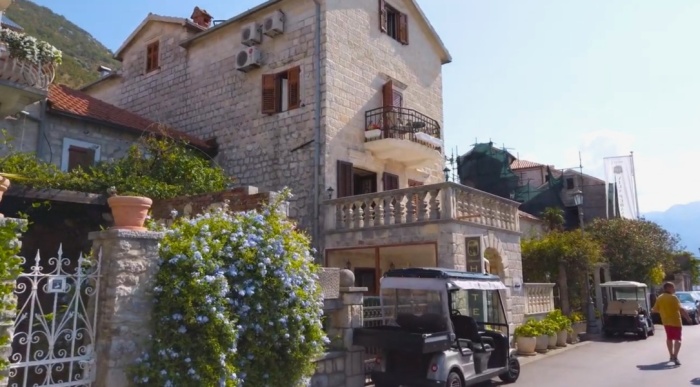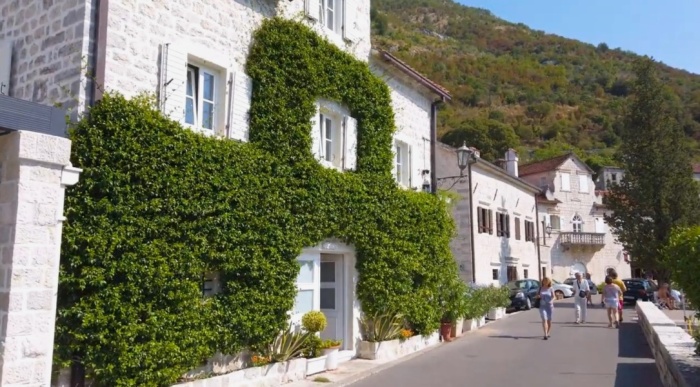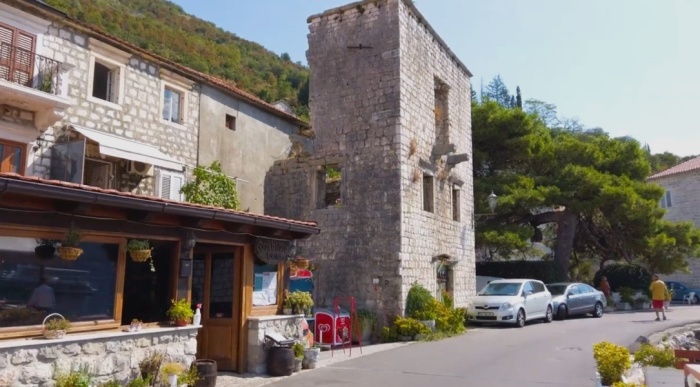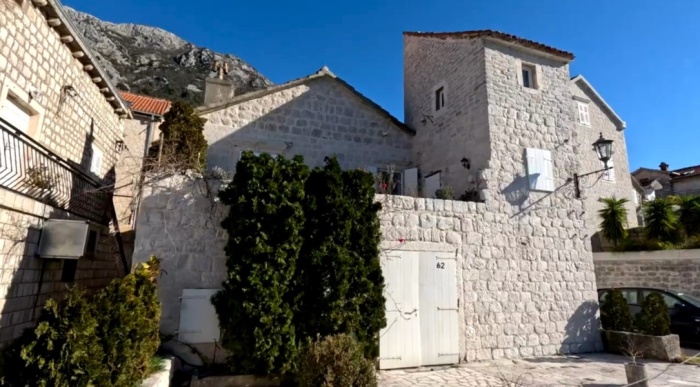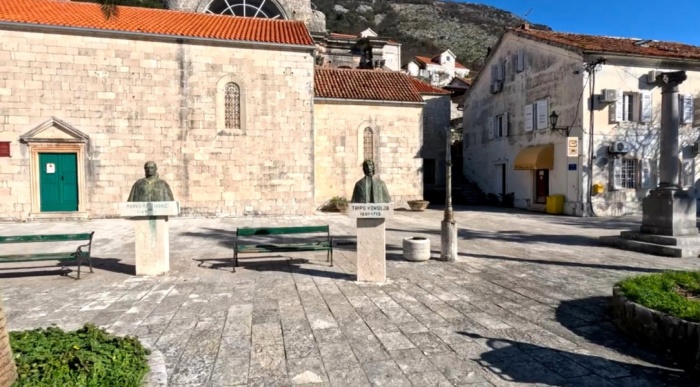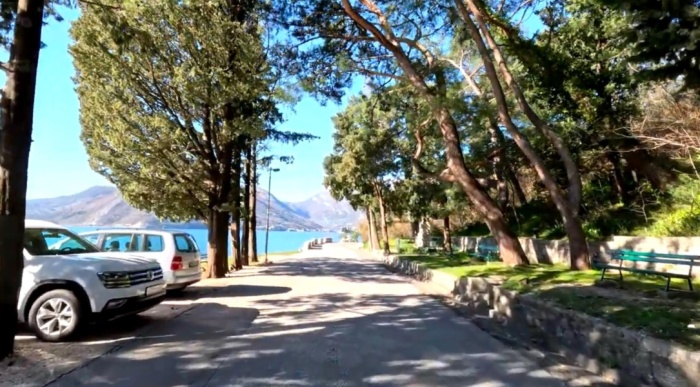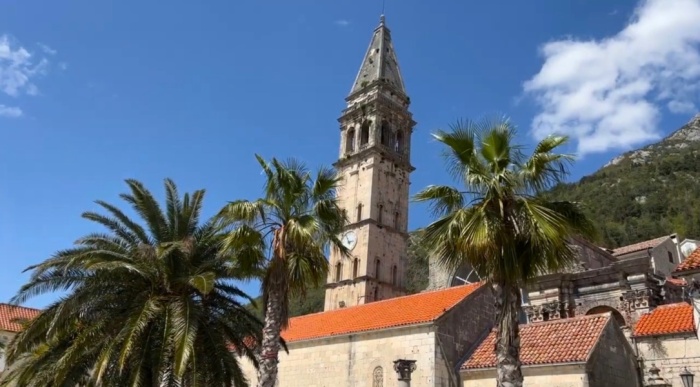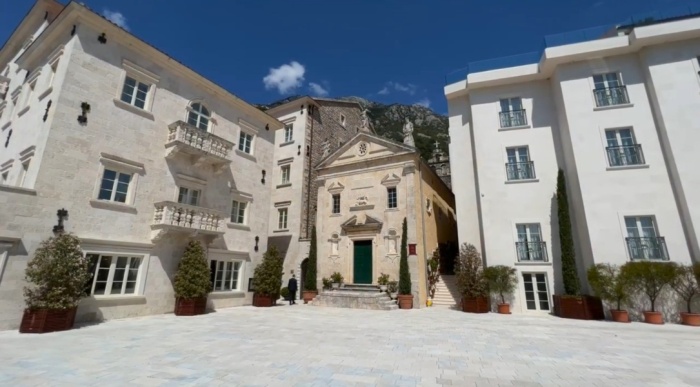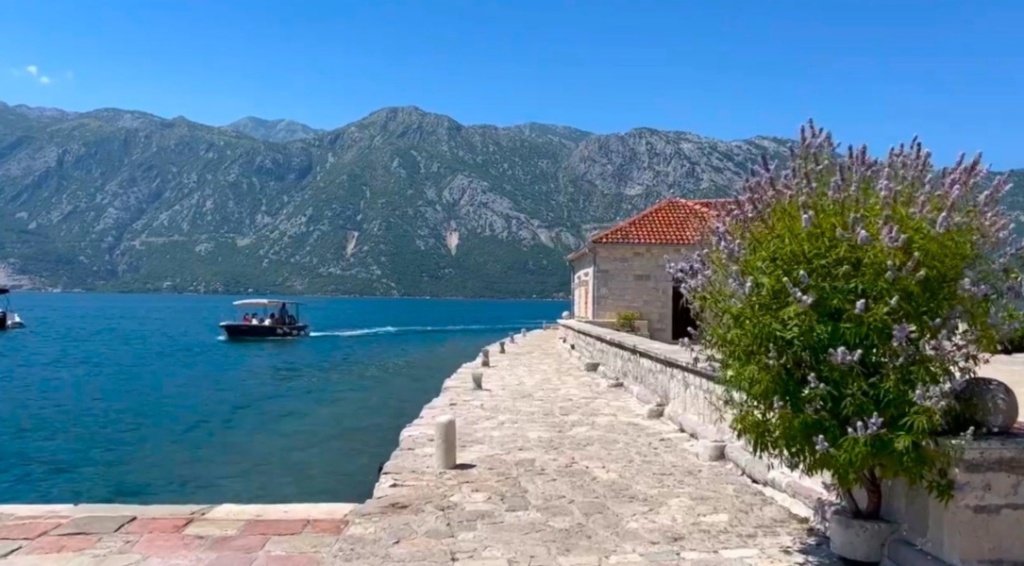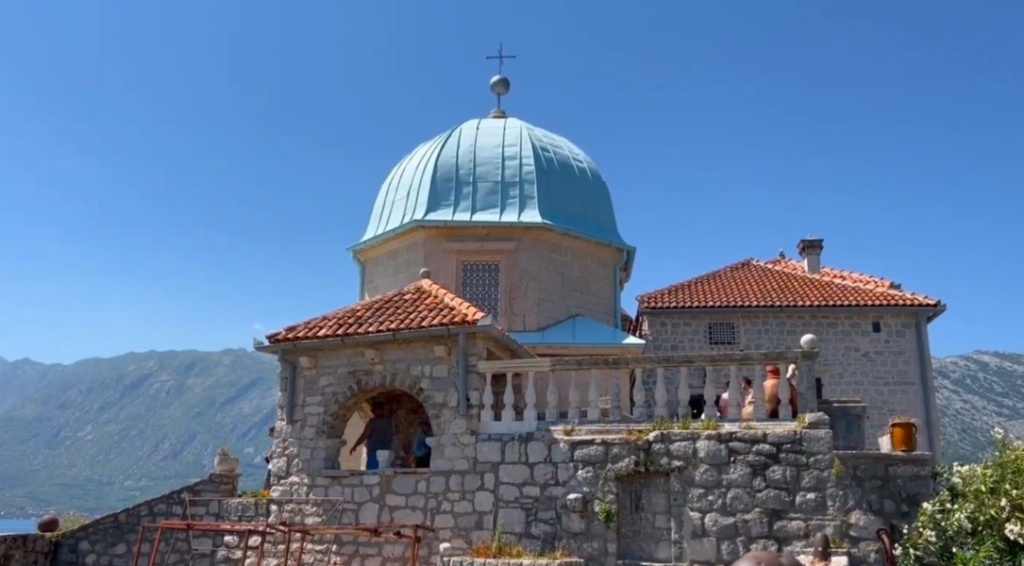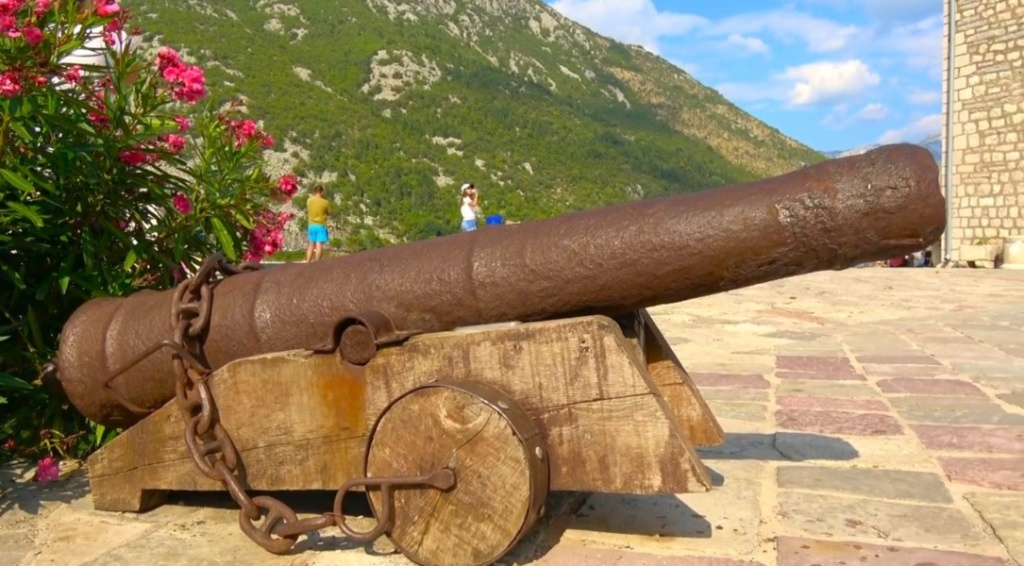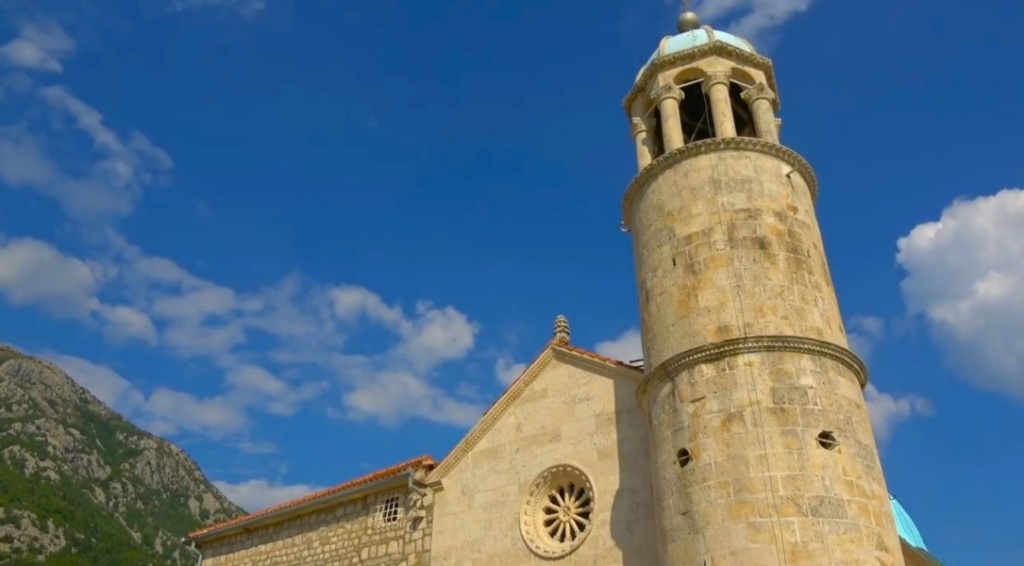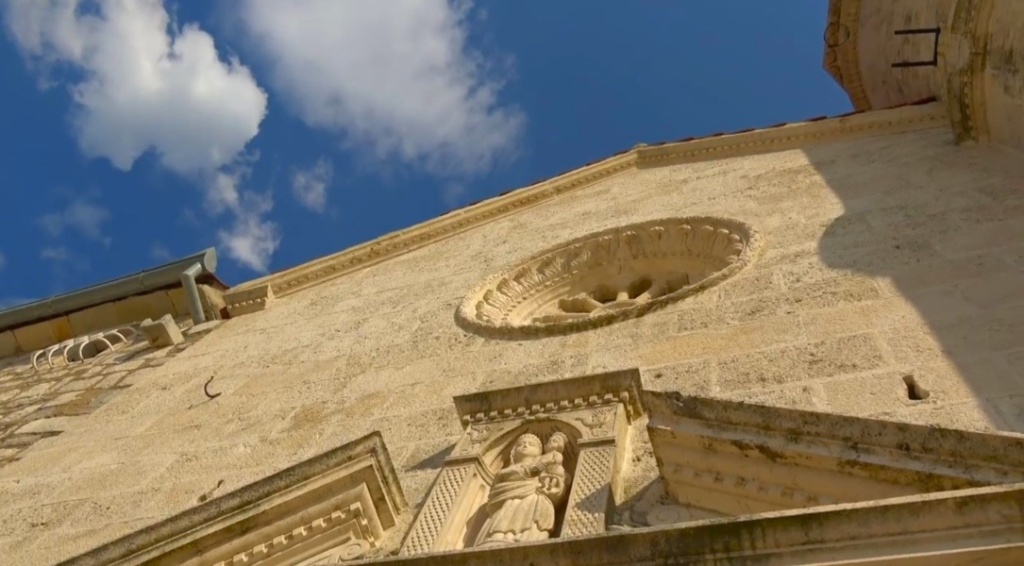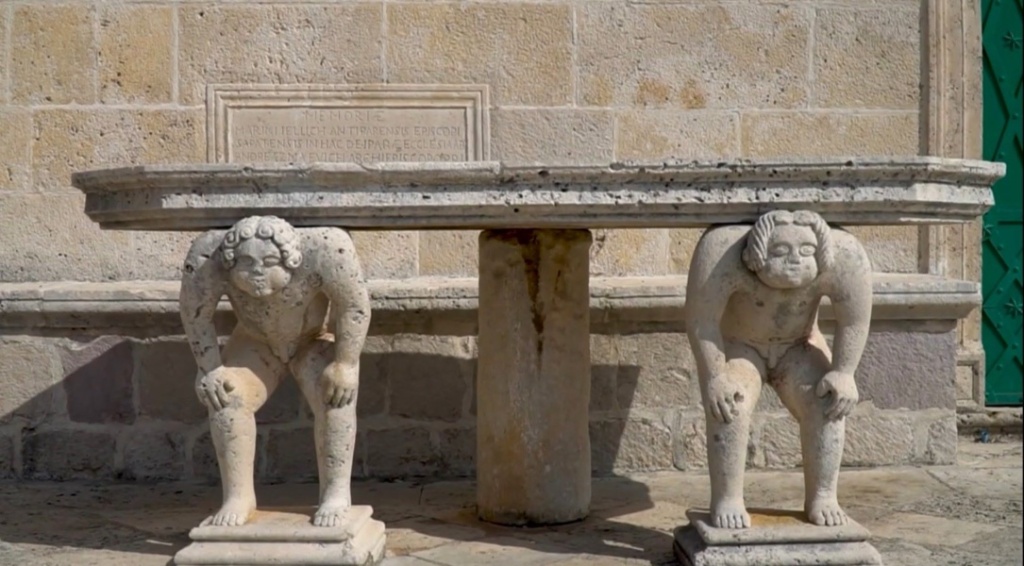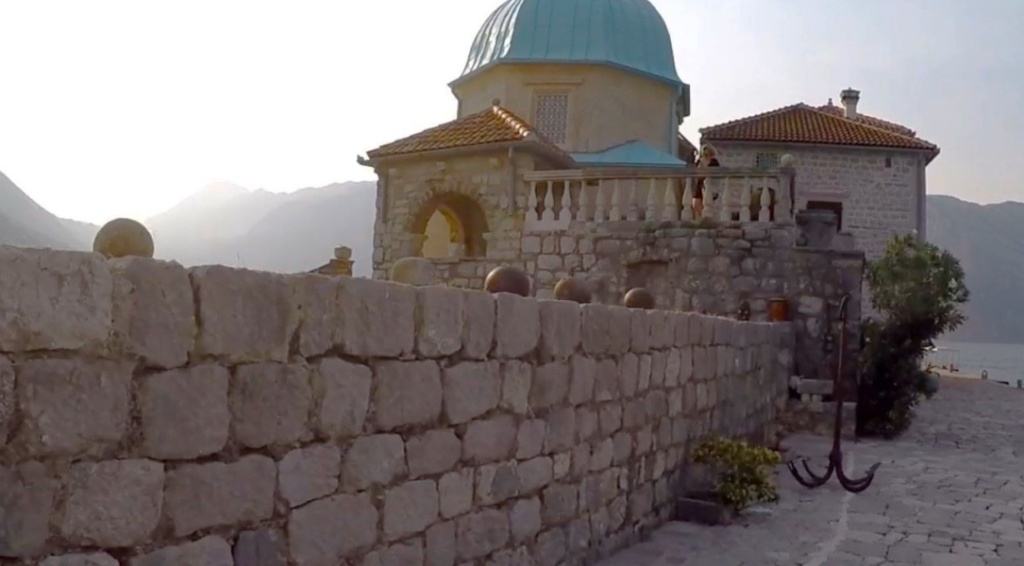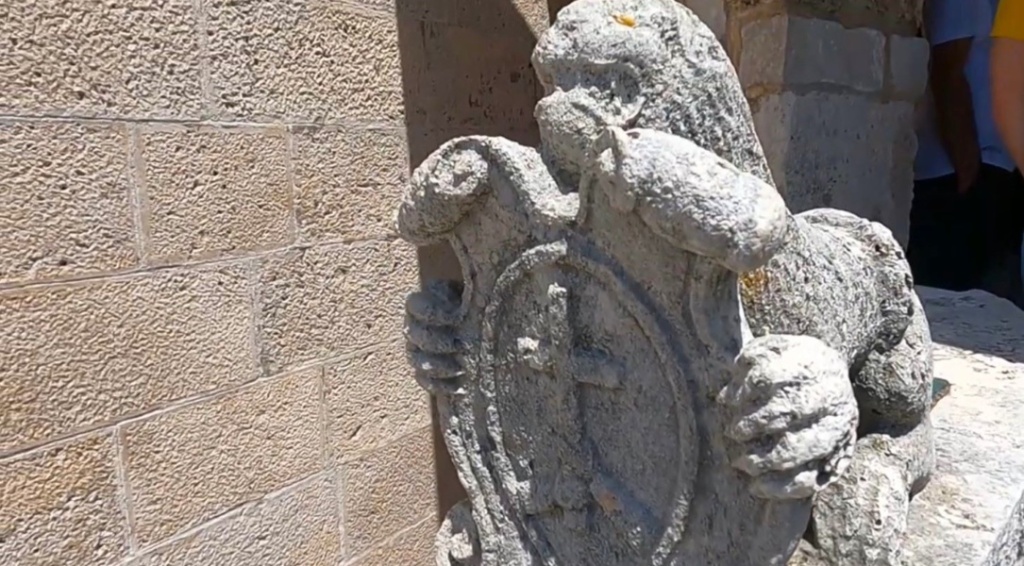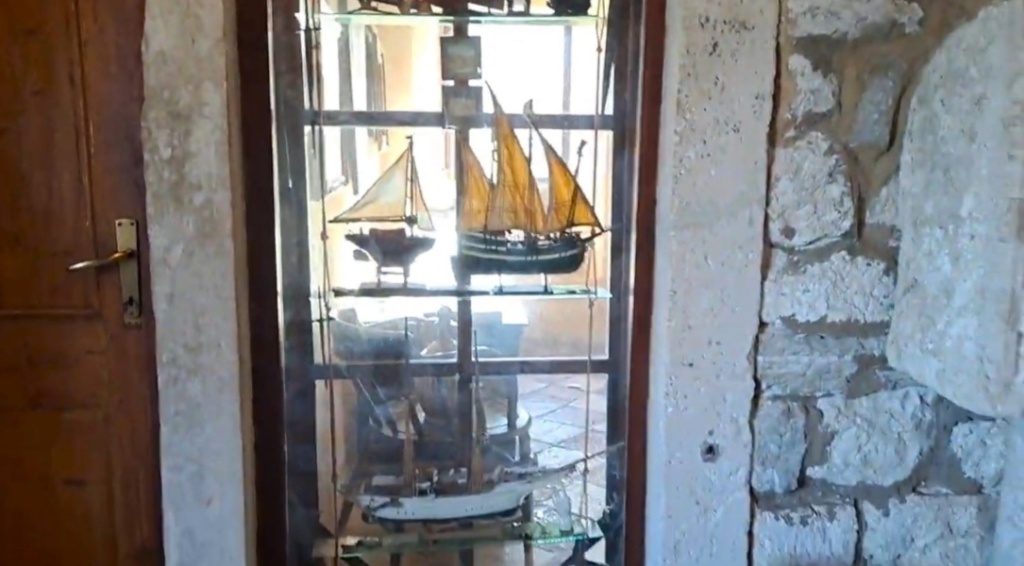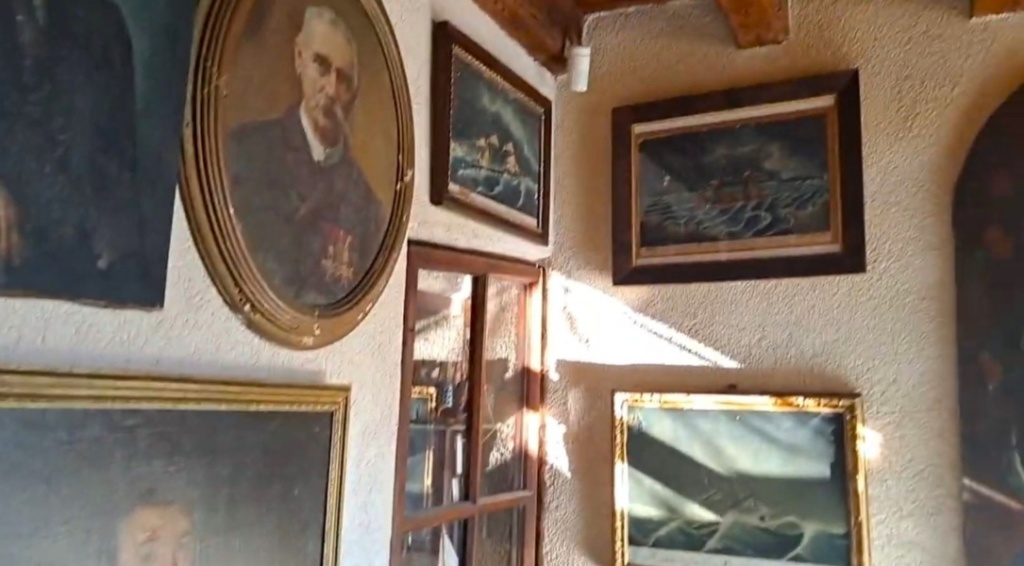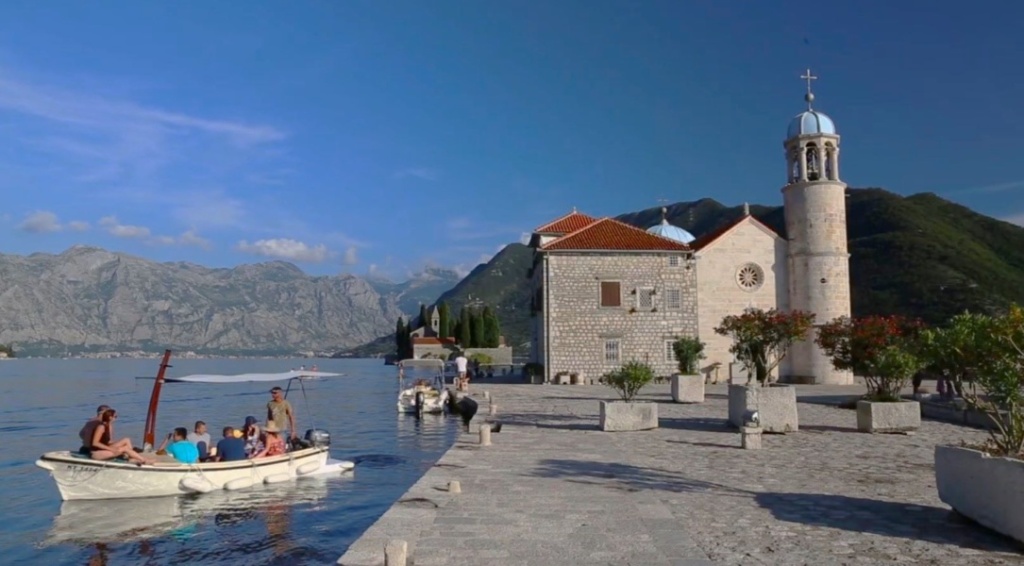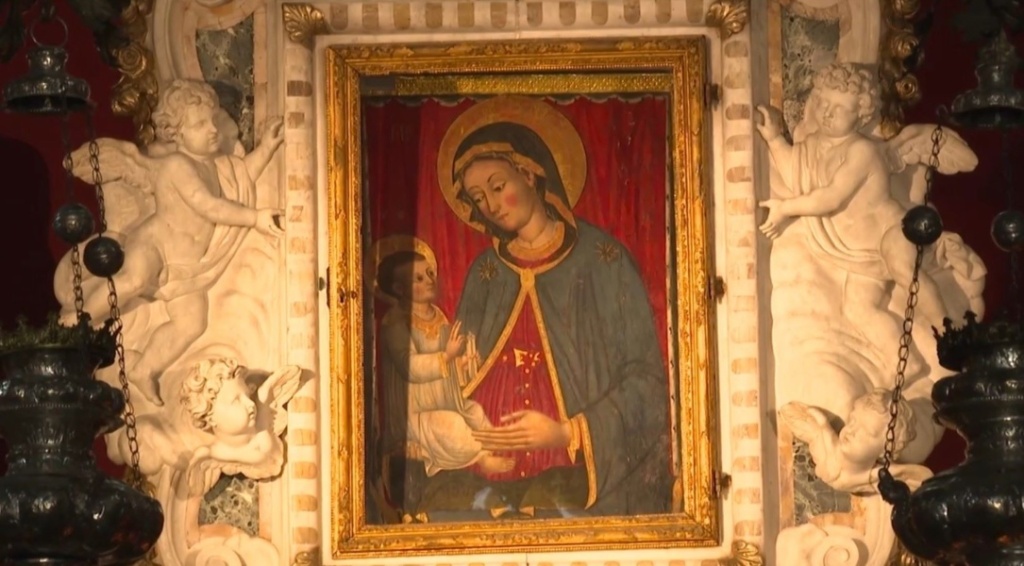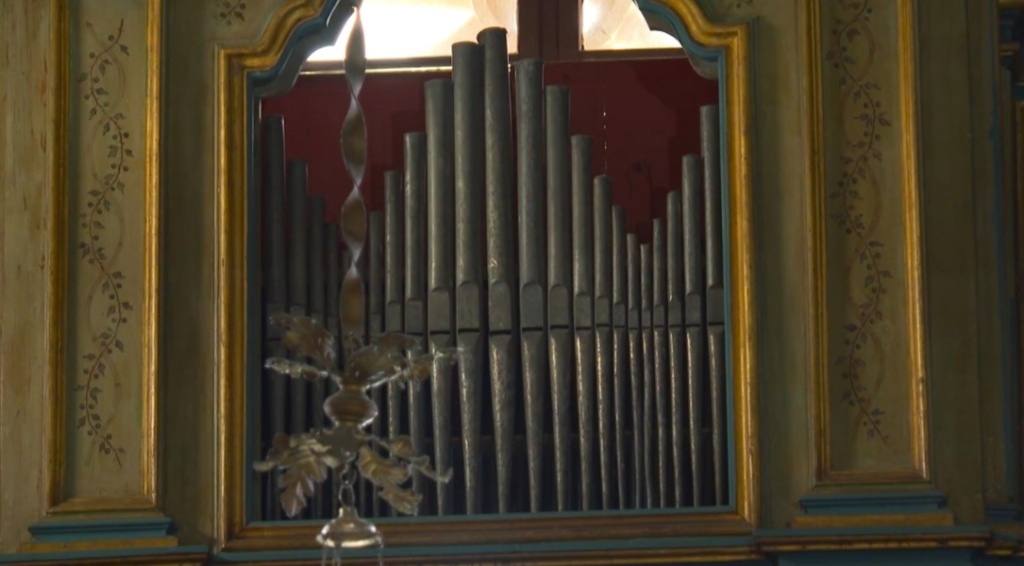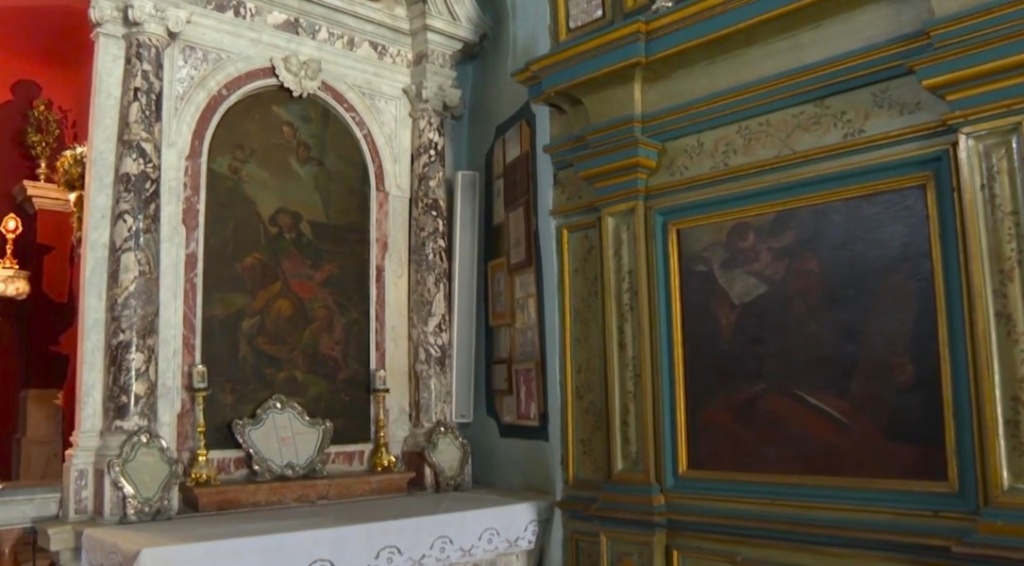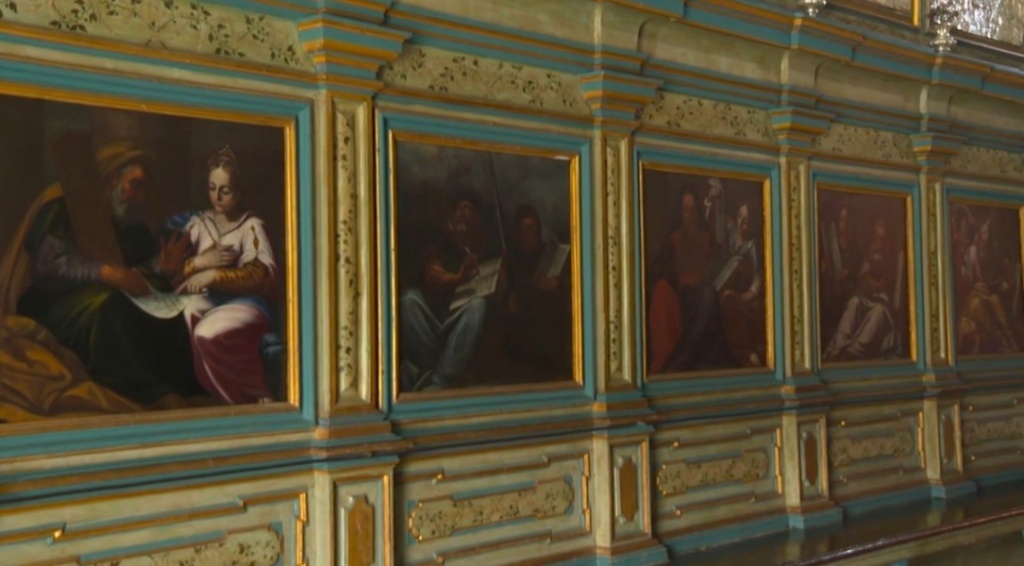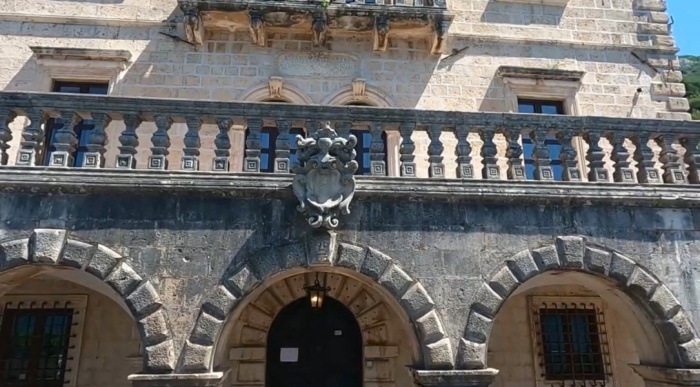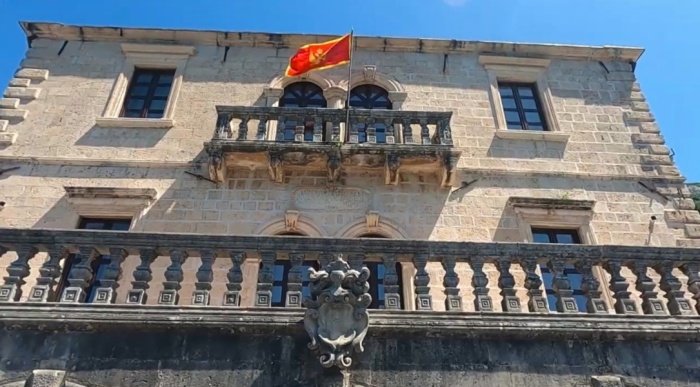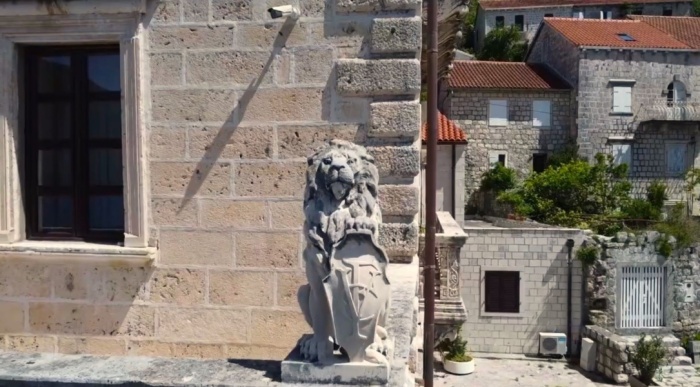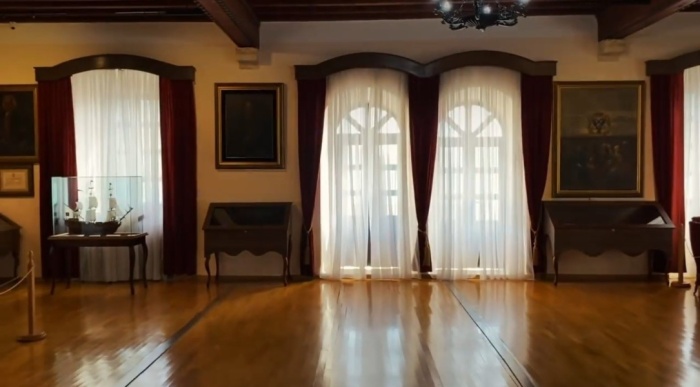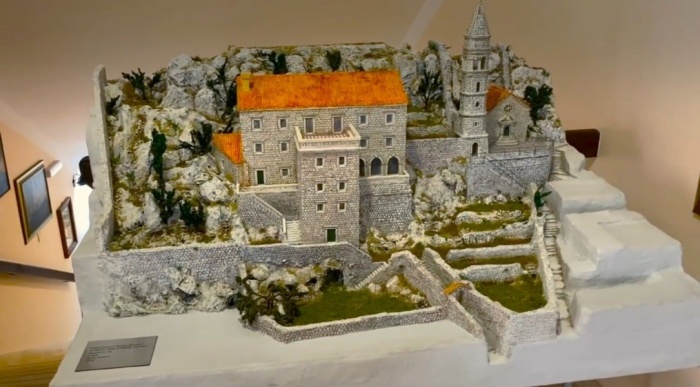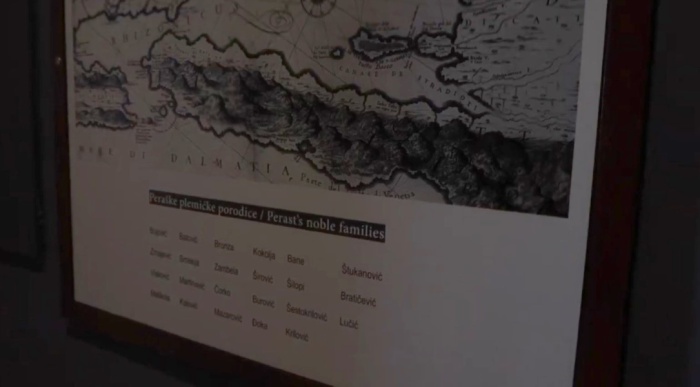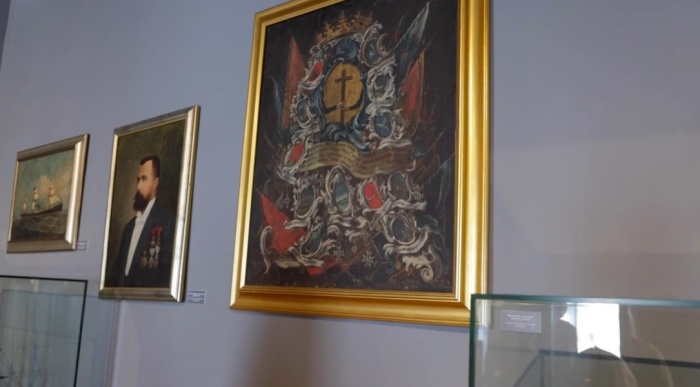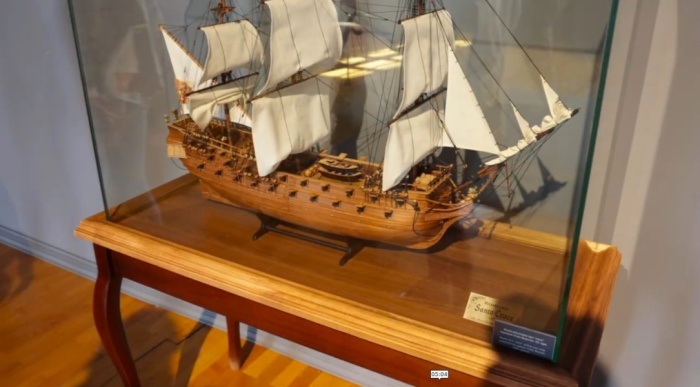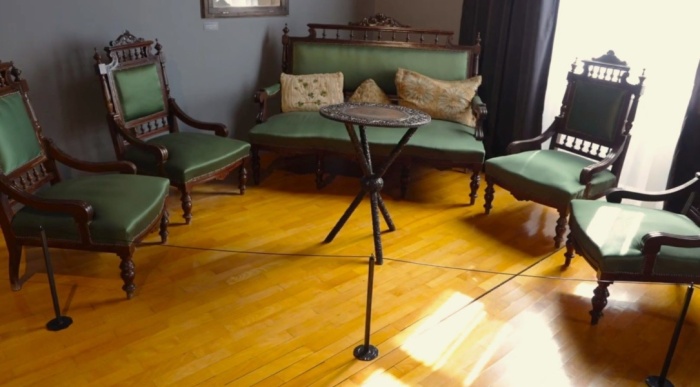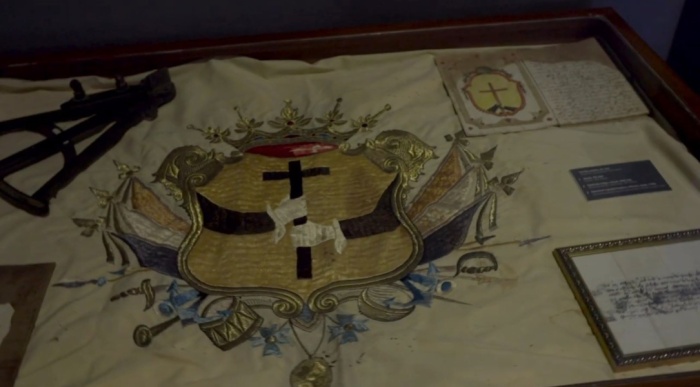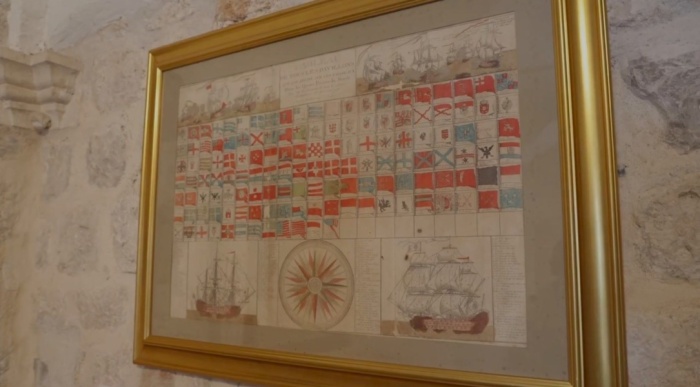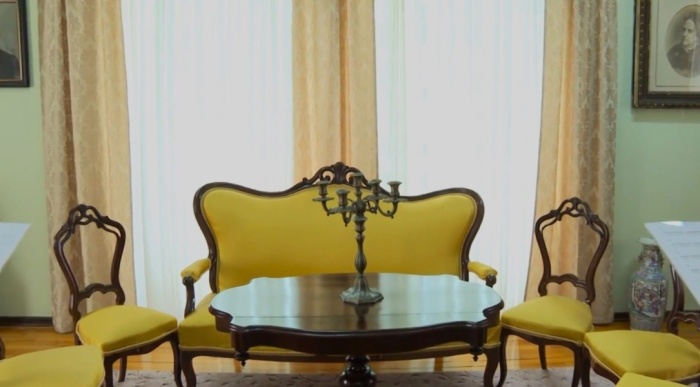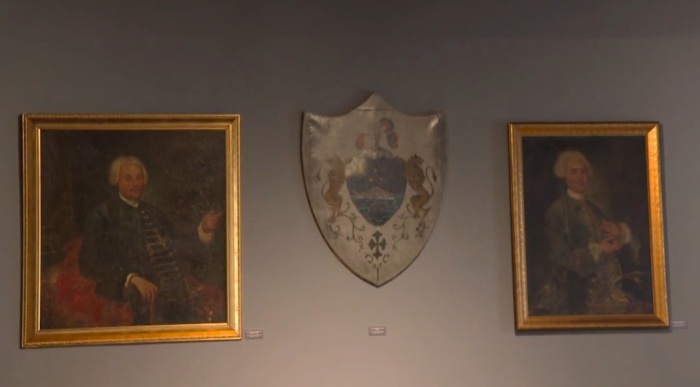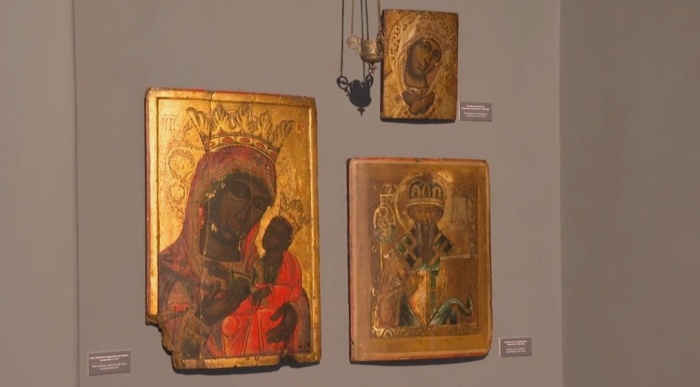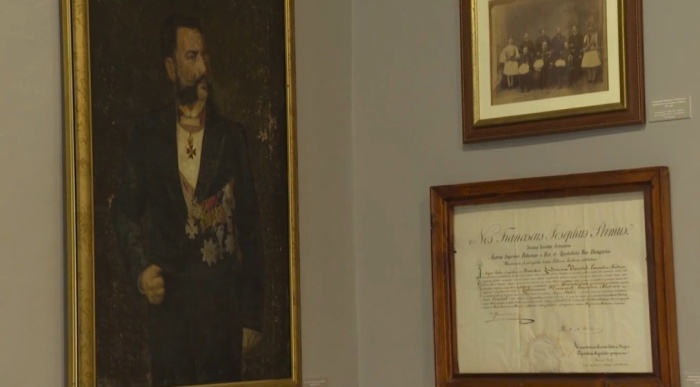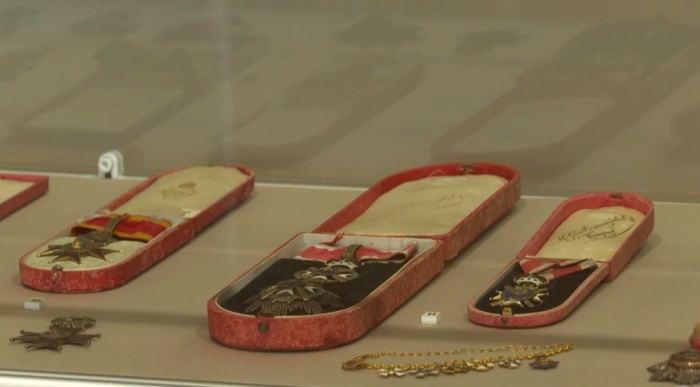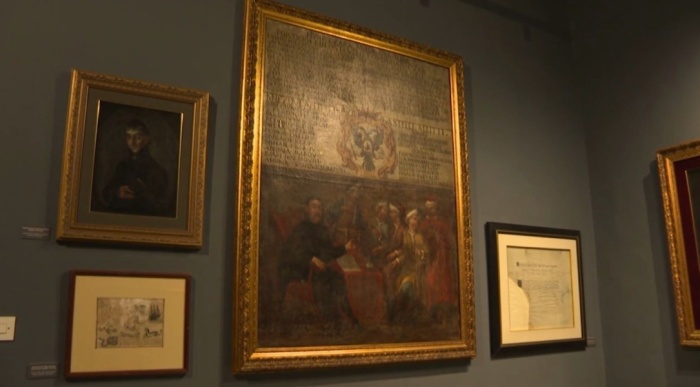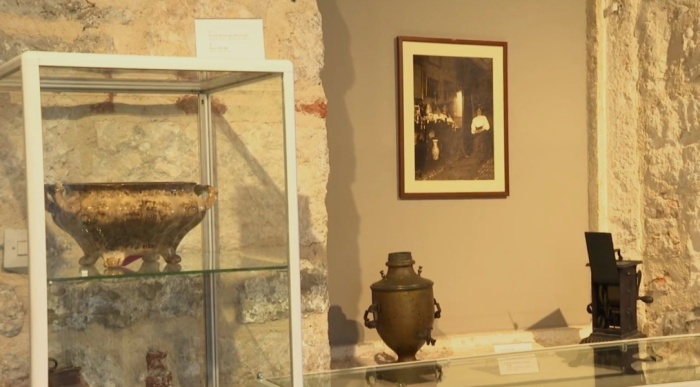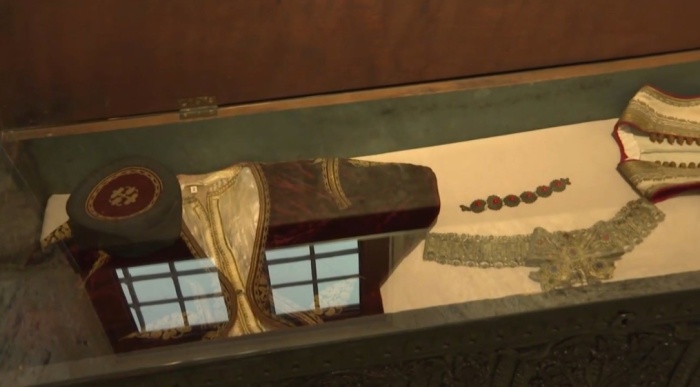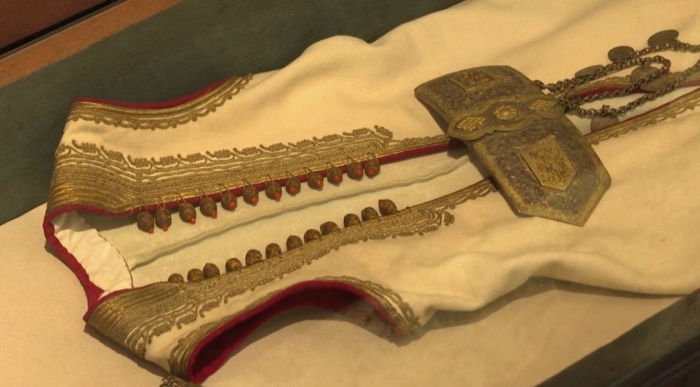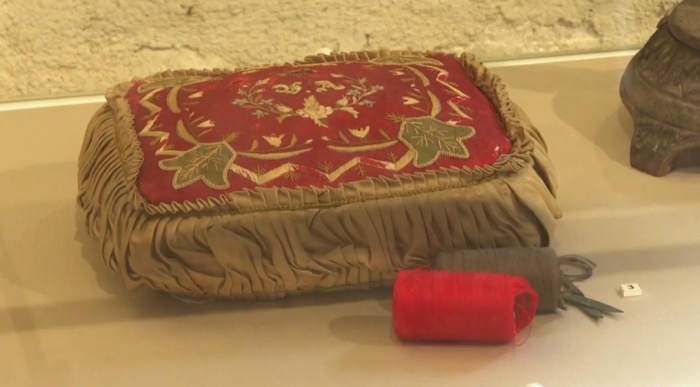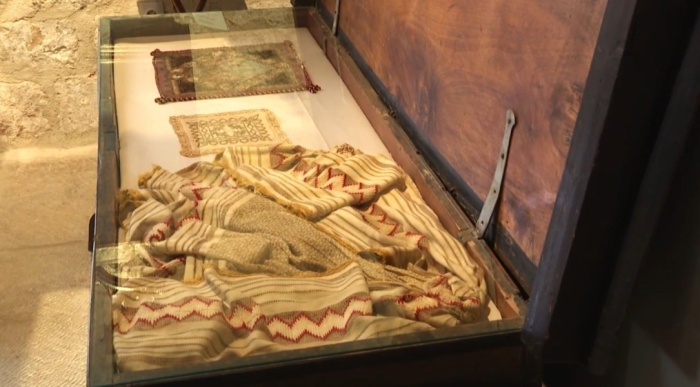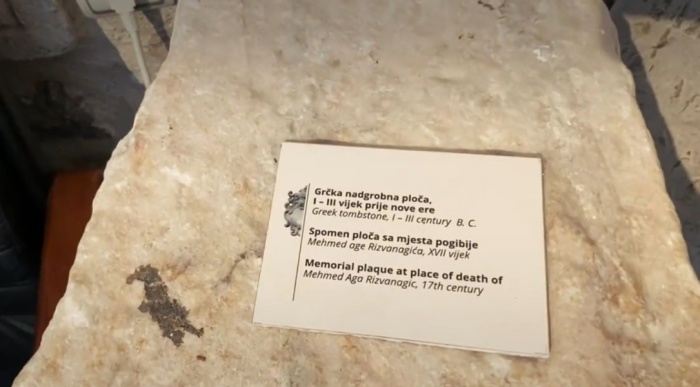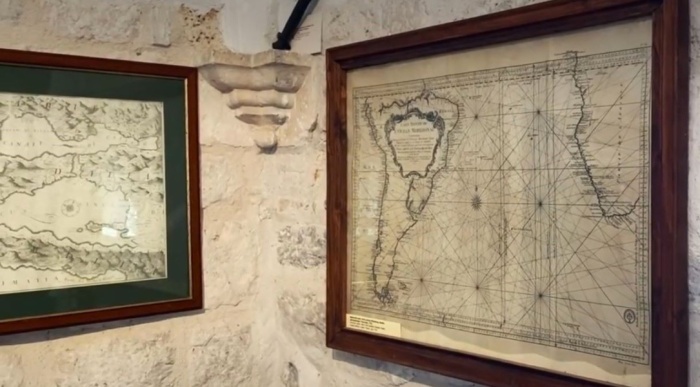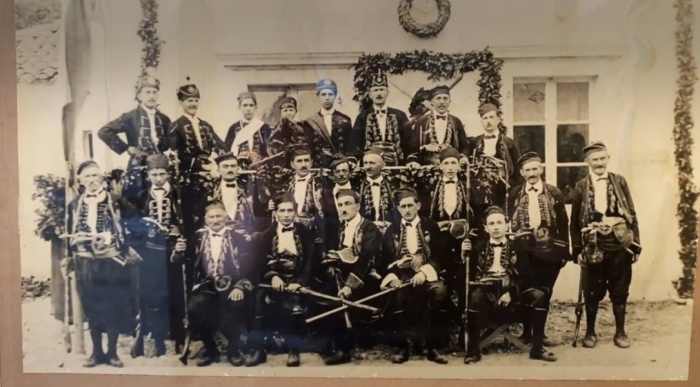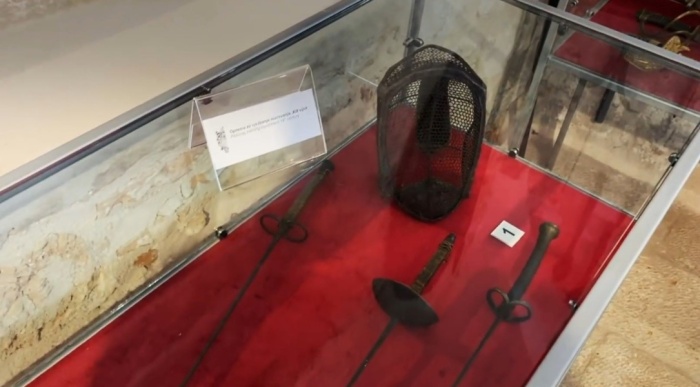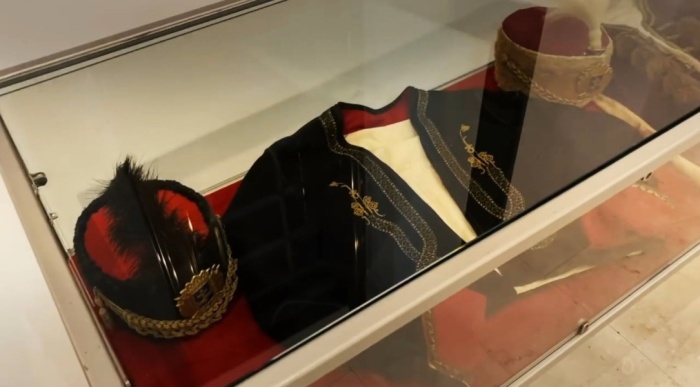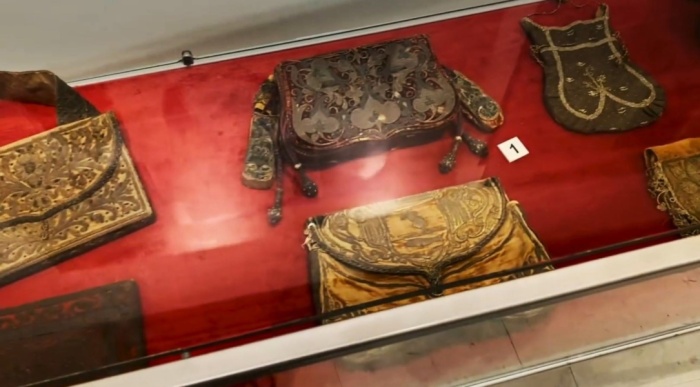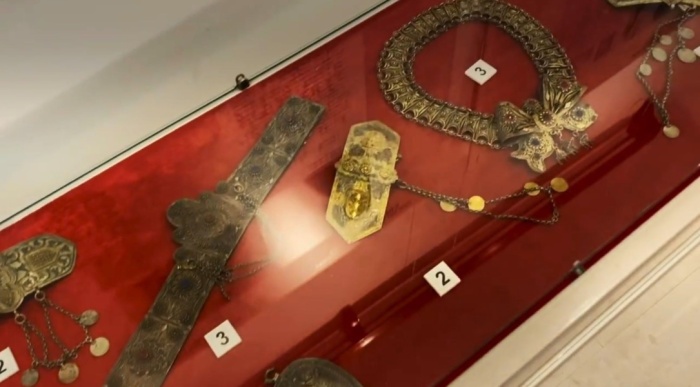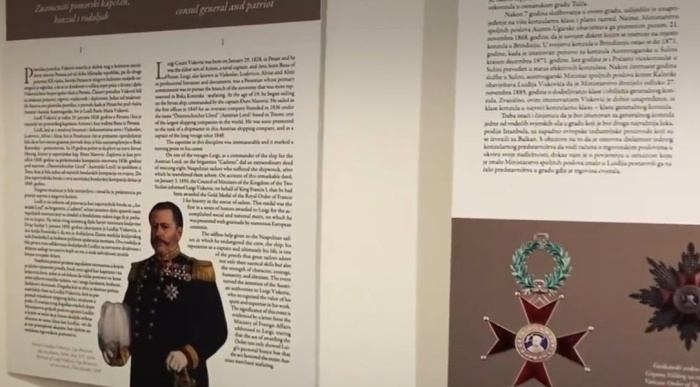Perast is a historic town renowned for its exceptional preservation, situated on the Adriatic coast and considered one of its best-preserved towns. It is part of the esteemed UNESCO World Heritage Site – Natural and Culturo-Historical Region of Kotor. Unique in comparison to other nearby fortified cities like Kotor and Budva, Perast boasts unobstructed access to the water without city walls.

The town’s rich legacy is evident through Venetian-era palaces, public squares, and churches which stand as testaments to its prosperous past as both a significant trading port and maritime training hub. Set against the stunning backdrop of deep-cut bays known as the “fjords” of the Mediterranean, these architectural marvels reflect Perast’s historical significance.

Geographically located at the base of St. Elijah Hill (873 meters), it faces directly across from Verige strait’s narrow passage where Risan and Kotor bays – two innermost arms of The Gulf of Kotor merge together surrounded by scenic mountain rings. This picturesque setting not only highlights natural beauty but also underscores Perast’s strategic coastal importance throughout history.

Perast is renowned for being one of the earliest inhabited areas in the region. Archaeological evidence reveals a deep historical timeline stretching back to Neolithic times around 3500 BC with discoveries made in Spila’s caves above Perast. The area is also rich with relics from Illyrian, Roman, and early Christian periods.

Named after the Illyrian tribe Pirusta, Perast flourished significantly during its time under Venetian rule in the 17th and 18th centuries. This small baroque town was once governed by twelve distinguished clans known as Kazada, comprising prosperous fishermen, traders, and mariners who erected their impressive sandstone residences along the harbor front.

A notable event in Perast’s history was when its inhabitants successfully repelled Ottoman forces during a siege. As recognition for their bravery and defense efforts, Perast received honorary rights in 1654 to guard the esteemed Venetian flag of St. Mark a symbol reflecting both honor and autonomy within Venice’s sphere of influence at that time.

Perast is renowned for its significant maritime heritage and rapid development during free trade with Venice. By the end of the 17th century, Perast established itself as a prominent maritime hub by founding the first maritime school in the Balkans. This institution was notable for educating sixteen Russian aristocrats and several of Europe’s distinguished admirals under the direction of Marco Martinovic.

During its peak, Perast maintained a powerfull merchant fleet consisting of approximately 100 ships, manned by sailors celebrated for their exceptional navigational skills and bravery. Despite its relatively small size, featuring just one main street, Perast was adorned with 18 opulent palaces belonging to noble families of that era. Additionally, city is invested considerable wealth, totalling 50 thousand gold Venetian ducats in constructing what would stand as the tallest bell tower on the eastern Adriatic coast during those times, symbolizing both its wealth and cultural influence during that era.

Bujovic Palace stands as the most exquisite example of Baroque architecture in Bay of Kotor, dating back to the 17th century. This historical edifice was once owned by the renowned seafaring Bujovic family and represents their legacy. The palace is strategically located on the waterfront in the western part of Perast, aligning perfectly with its scenic surroundings.

Constructed from hewn stone sourced from Herceg Novi’s demolished walls after its release from Turkish dominion in 1687, the building material itself narrates a tale of liberation and transformation. The facade of Bujovic Palace is adorned with three significant stone tablets inscribed with the year 1694, pinpointing the commencement of its construction. These tablets also serve as a tribute to Vicko Bujovic’s valor for which Venice expressed gratitude through funding for the palace, honoring his contributions alongside his brother Ivan Bujovic, both descendants of the Stojisic casada. The palace not only embodies a rich cultural heritage but also captures a pivotal moment in history where architecture commemorates personal bravery and political triumphs.

The Palace stands as a testament to architectural splendor on the Adriatic coast, crafted by renowned Venetian architect Giovanni Battista Fontana. Exemplifying Renaissance elegance through its foundational design marked by classical pillars, it boasts five balconies adorning three of its facades. The palace’s architecture seamlessly transitions into the Baroque era with intricately adorned arcades, elaborate balustrades, and meticulously detailed decorative motifs. A prominent feature is the expansive porch running across the ground floor’s entirety, crowned by a stately balustraded terrace above. The construction of a raised coastal road in 1912 has created a visual illusion suggesting the Perast coastline has “sunk” seemingly distorting the palace’s proportions, but in reality preserving its aesthetic harmony.

Prominently displayed on its exterior walls are Latin inscriptions alongside the noble Bujovic family coat of arms, which add to its historical significance. Today, it serves as a museum showcasing a vast collection of artifacts encompassing furnished salons, clothes, personal items, maritime maps of the time, weapons, art paintings, flags, documents, local artwork, ship models and various exhibits pivotal to understanding Perast’s rich seafaring heritage.

Visitors can immerse themselves in breathtaking views from the balcony, where they’re greeted with a picturesque panorama featuring the iconic bell tower, churches, magnificent palaces, islands and majestic mountains enveloping Perast. Museum not only showcases the rich history and beauty of Perast but also brings attention to other significant edifices within close proximity.

Zmajevic Palace a 17th-century Renaissance-style structure is nestled up on a hillside in the western part of Perast. Known as “the Bishopric” it once served as residence to bishops Andrija and Vicko Zmajevic and held extensive library belonging to the Zmajevic family, reputedly one of Dalmatia’s largest collections during its time. The Palace, with family chapel dedicated to Gospa od Rozarija (Our Lady of Rosary) with octagonal belfry, presents one of the most conspicuous detail of Perast landscape.

The Palace was built in several stages, and got its final baroque image at the time of Andrija Zmajevic, as witnessed by the inscription on the front stating the year 1664. Decoration of the Palace with frescoes was done by the well-known baroque painter Tripo Kokolja, whose maecenas was Andrija Zmajevic. The Zmajevic’s are one of the most significant Perast families, originating from village Vrba of Njegusi. They belonged to the Casada Perojevic. The Zmajevic’s gave some of the most distinguished persons of Perast.

Although privately owned today and not open for public visitation, Zmajevic Palace remains a testament to Perast’s storied past and its seafaring legacy.

Viskovic Palace a historic edifice built in 1500 and subsequently rebuilt in 1718, stands as a testament to architectural grandeur on the waterfront beneath the old roadway of Perast. This palace boasted a well-maintained garden adorned with a loggia, enhancing its aesthetic appeal.

A distinctive defensive tower emerges as its most prominent feature marked by the Latin inscription “Parvum Propugnaculum Pro Praesidio Perasti” which translates to “Little Fort for the Protection of Perast”. Historically pivotal, it served as a bulwark against Ottoman sieges. Within its highest chamber was a historical artifact a cannon preserved through time. The esteemed Colonel Conte Fran Viskovic once owned the palace, his legacy is immortalized with his initials carved into the front entrance.

The idea of turning the Viskovic Palace into a museum was conceived in the 19th century by Fran and Krsto Viskovic. In the sixties of the twentieth century, Josip Viskovic, a judge from Split, and also the last direct descendant of the famous family, listed the movable property in the palace, with the intention of leaving it, together with the building, to Perast as a legacy. Josip Viskovic was unable to implement this idea during his lifetime, so his sister and widow did it “in respect of the will of the deceased owner of the real estate and movable property in question Josip Viskovic, who with the greatest piety and with self-denial preserved the real estate and movable property inherited from his ancestors in order to preserve them forever in Perast”, as stated in the Lifetime Support Agreement. During the period when the museum was operating, there was a large number of visitors, which is why the possibility of providing additional rooms for exhibiting display of family items was also considered.

In 1979, a strong earthquake inflicted serious damage, the movable fund was transferred to the Museum of the City of Perast, and its splendor frozen in time yet awaiting rejuvenation. The palace has remained as a testimony of more than five centuries of life of one of the oldest and most meritorious families of Perast, who made a great contribution to the maritime, military, commercial, political and cultural past of this city. The palace is finally in the reconstruction phase.

Smekja Palace a grand and elegant edifice in Perast, stands out as the town’s most impressive structure. Constructed entirely of stone sourced from the island of Korcula, it exhibits a gleaming white facade complemented by a distinguished belvedere. Spanning three stories in height, it commands attention along the waterfront, particularly noticeable when approaching Perast from the west.

Strategically positioned on the waterfront in the bustling heart of Perast, it neighbors both St. Mark’s church and square offering both prominence and convenience.The palace comprises two distinct buildings, one built-in 1764 nestled between the coastal road and old road, while its newer counterpart commenced construction concurrently but reached completion only in the 1930s. These structures share connectivity through a vaulted passage arching over the old road, seamlessly integrating tradition with modernity within its historic walls.

Historicly rooted in the rich maritime legacy of the Smekja family, originating from the Casada Cizmaj with a lineage tracing back to seafaring activities in the latter half of the 16th century. It was Petar Smekja who significantly elevated the family’s economic standing after his notable venture in 1746, where he instituted a commercial passage connecting Venice and the Baltic nations aboard his vessel, “Leon Koronato”. His success led to him being titled as a “Konte” (count) in 1748 and culminated in the Smekja family attaining Kotor nobility status by 1779.

Presently, the esteemed building once linked to the Smekja legacy has been repurposed into the luxurious Iberostar Heritage Hotel. It holds a prime location where guests have convenient access to St. Apostle Mark Church directly from the adjacent plaza, adding spiritual, historical and cultural dimension to their experience at Perast.

Balovic Palace stands as a prime example of 18th-century baroque architecture, characterized by its simplicity, harmony, and monumental presence. This building is crowned with a belvedere, adding to its grandeur. Originally comprising four rooms and a salon, the palace maintained its initial configuration until 1981 when it underwent restoration and was converted into apartment units.

Historically significant for its original owners from the casada Dentali family, predominantly composed of seamen active in both naval service and private maritime commerce, the Balovic Palace was once celebrated for housing a rich collection of archives and a vast library. However, these cultural treasures were removed from Perast on two occasions: firstly in 1933 and subsequently after World War II.

Adding to its historical significance is the summer of 1846 when Montenegrin Prince-Bishop Njegos resided at Balovic Palace. During his stay, he penned the poem “Paris and Helen” also known as “A night more precious than a century” contributing to the cultural tapestry woven into the very walls of Perast’s venerable structure.

Sestokrilovic Palace is a historic structure dating back to the late 17th century, stands in the southeastern region of Perast. The edifice’s construction era is clearly inscribed on the roof cornice, with the year 1691 marking its completion. This palace once belonged to one of Perast’s most ancient clans or casadas – the Sestokrilovic’s.

Architecturally, it is a two-story structure exuding Renaissance style influences and is characterized by its harmonious proportions. Unlike many contemporaneous buildings, it does not feature a belvedere but instead includes defensive loopholes – a reflection of its era’s necessities for protection and fortification.

Lucic – Kolovic – Matikola Palace is a historic edifice located in the western part of Perast, directly on the waterfront. This heritage building dates back to the second half of the 18th century, with its construction year proudly inscribed on the main facade as 1779. It was owned by Nikola Kolovic – Matikola along with members of the casada Studeni.

Characterized by modesty and harmonious proportions, it features a small yard enclosed by a fence which offers direct views of the sea. A distinctive architectural element of the palace is its belvedere, which extends on all four sides, making it a notable landmark within its setting.

Bronza Palace is a historic baroque-style building located on the waterfront in the “Luke” area of eastern Perast. Constructed in the mid-18th century, it boasts a rich history, having functioned as a customs station (“Dogana”) during the 19th-century Austro-Hungarian rule.

The palace was once home to the Bronza family who originated from Skadar and were part of the Silopi casada. This family had a notable reputation for their involvement in seafaring and commerce. The palace features a single-storey layout with its original room configuration meticulously preserved over time. One of its distinctive architectural elements is a belvedere, adding to its classic baroque character and charm.

Vukasovic – Kolovic Palace is a historical structure located on the waterfront, adjacent to the Viskovic Palace. Dating back to the first half of the 18th century, it stands as a testament to the architectural heritage of its time. The palace was once home to the Kolovics, members of the Sestokrilovic casada.

Originating from Sestani near Bar, they relocated to Perast and rose in prominence throughout the 17th and 18th centuries as distinguished seamen and merchants. Additionally, members of the family were also known for their contributions in various fields including medicine, theology, and preserving traditional folk literature. The palace stands today not only as a testament to their legacy but also as a piece of cultural history encapsulating generations of professional pursuits and achievements.

Brajkovic – Martinovic Palace, a historical gem, is situated west of the main square in Perast, adjacent to the old road. This architectural treasure stands as one of Perast’s most ancient preserved edifices, erected on the former grounds of a Markovic family residence.

A notable inscription dating back to 1623 reveals its construction by Vicko and his siblings, descendants of Tripo Markovic, who eventually adopted the surname Martinovic from casada Cizmaj. Retaining its original layout through centuries, the palace exudes historic charm.

A highlight within is the first-floor salon which was ornately embellished at the close of the 19th century in Napoleon II style décor. This space claims exclusive status as Perast’s sole completely intact salon still boasting authentic adornments and period furniture making it a significant cultural preservation site with immense historic value for visitors and historians alike.

Mazarovic Palace is a historic edifice located in the southeastern part of Perast, nestled above the old road. Although its facade is partially concealed by a row of houses erected directly beside the old thoroughfare, it remains a striking example of mid-18th-century baroque architecture.

This two-story palace features a prominently placed belvedere adorned with the coat-of-arms of the Mazarovic family, adding to its grandeur and historical significance. Despite its esteemed heritage, records as early as 1882 denote both the palace and accompanying old house as ruins in land registers.

Perast has one of the most beautiful and significant positions on the Gulf of Kotor. It has played a pivotal role for centuries as the custodian of the Verige Strait, which serves as the principal entrance to Kotor. Verige Strait is only 350 meters wide and it is the narrowest strait in the Bay.

The name comes from unwilling event from 1624, when the pirates from North Africa sailed into the Bay of Kotor and then ravaged the city of Perast. After that, the people of Perast and Kotor in order to ensure against sudden pirate incursions, in the narrowest part of the strait, have developed from one coast to the other shore an iron chain named Verige after which the strait is named.

Despite being encircled by Turkish-controlled lands, Perast lacked comprehensive defensive walls a vulnerability in its defense system. To safeguard their crucial maritime passage, its inhabitants fortified two strategic points: St. George Island and Our Lady of the Angels Church. Additionally, they built the Fortress of St. Cross atop the town’s elevation.

The fortress housed a small Venetian garrison commanded by a castellan, a unique position funded by Venice but appointed by Perast’s local government. This fortification proved essential during the Ottoman incursion on May 15, 1654, underlining its indispensable defensive purpose in preserving access to Kotor through turbulent times.

During the Napoleon’s rule over Bay of Kotor it was occupied by French troops until October 13, 1813. Following the French occupation, from 1814 to 1895, the fortress came under Austrian control. When they retreated, cannons and other military equipment were removed from the site. By the year 1911, records indicate that the fortress had been completely abandoned.

Situated above today’s ruins of the fortress lies a Roman road remnants that historically connected Risan to Akruvium (Kotor), speaking volumes about its strategic significance through various epochs in history.

Perast is a picturesque town characterized by its unique topography, as it descends from a highway down to the Obala Marka Martinovica waterfront road.

This charming thoroughfare stretches for approximately 1.5 kilometers along the town, facilitating a leisurely 20-minute walk from one end to the other at a steady pace without interruptions. However, should visitors wish to indulge in local amenities such as drinks, ice cream or engage in photography, the same walk could extend upwards of one hour.

The town boasts architectural beauty with elegant palaces and historical churches contributing to its charm. Visitors can explore quaint shops, welcoming guest houses, and city square within close proximity of the main street. For those seeking panoramic bay views, myriad pathways and staircases ascend steeply into the hillside.

At Perast’s core lies St Nicholas’ Church situated on a main square adorned with date palms and bronze busts commemorating notable noblemen of Perast enriching visitors’ experience with cultural heritage and serene ambiance.

This square offers a unique cultural experience where history meets tradition and allows visitors to connect historical figures with their palaces they once inhabited. Designed to enhance your visit to Perast and enriches your understanding of the town’s heritage by providing a tangible link between the majestic buildings and their past residents.

Moreover, those planning a visit on May 1st will have the opportunity to witness a time-honored local tradition in front of St. Nicholas Church. An old custom of the inhabitants of Perast is Madj (Magjo), which is celebrated early in the morning every May 1. A young oak tree is ceremoniously adorned with vibrant ribbons and offerings such as wine and cake, symbolizing the beginning of the most beautiful spring month according to ancient customs from Perast.

St. Nicholas Church itself stands as a beacon for mariners, dedicated to Saint Nicholas – the patron saint of seafarers since its construction in 1616. The current edifice replaces what was believed to be a previous church established in 1564, underscoring its longstanding significance within the community as both a place of worship and historical landmark.

The St. Nicholas church complex embodies a historical architectural ensemble, consisting of the original 17th-century structure alongside its grander, partially-constructed counterpart designed by Venetian architect Giuseppe Beati. Initiated in 1740, the ambitious expansion includes only the completed apse and sacristies due to construction halting in 1800 amidst the Napoleonic Wars.

Today, both edifices – the old church and the incomplete new one – have merged to create a unique single entity with deep historical roots and distinct architectural features representing different periods.

Constructed in 1691 next to the adjacent church a magnificent bell tower stands at a height of 55 meters and exhibits a Baroque architectural style. It was designed by Ivan Skarpa, known as “the Baptist” from the island of Hvar. The structure is historically significant, with its major bell being generously donated by Archbishops Andrija and Matija Zmajevic in 1713.

Additionally, two smaller bells were integrated into the bell tower in 1797 to complement the acoustic array. A clock sourced from Venice enhances the belfry’s façade since its installation in 1730.

Within the church of St. Nicholas the home of the bell tower a vast array of paintings can be found created by Tripo Kokolja (1661-1713), a renowned Perast painter. The organ within possesses historic charm with records indicating repairs dating back to 1699, although its exact construction date remains shrouded in history.

Moreover, treasures including valuable paintings, historical family records for some clans, and precious vestments dating back to the 16th and 17th centuries are meticulously preserved within the church treasury. This heritage site represents not only religious significance but also serves as a custodian for cultural artifacts spanning several centuries.

The Bay of Kotor features two picturesque islands, each crowned with its own chapel: St. George (Sv. Djordje) and Our Lady of the Rocks (Gospa od Skrpjela). Both islands contribute significantly to the cultural heritage and scenic beauty found within Montenegro’s coastal majesty, captivating visitors with their storied pasts and serene presence amidst the tranquil waters.

St. George is a natural island adorned with a historic abbey founded by Benedictines in 1166, which showcases centuries-old ecclesiastical architecture steeped in rich history. The abbey was historically managed by Kotor until 1634, after which governance passed to the Senate of Venice.

St. George’s Abbey bears marks from its turbulent past, it was subjected to pirate attacks, notably by Karadoz in 1571 which led to its burning down. The town of Perast commenced restoration of the church on St. George Island in 1603. The historical abbey experienced a turbulent period in 1812 when it was occupied by the French for approximately a year. This occupation came to end when local inhabitants from Perast successfully expelled the French forces from both the Fortress of St. Cross and the abbey itself. By 1814, control over the abbey shifted to Austrian hands. Today, on St. George Island, there is a small church amidst a old cemetery which serves as the final resting place for many seafarers originating from Perast, reflecting its maritime heritage. As a tranquil sanctuary, St. George is not open to the public.

Conversely, other island stands as a testament to human ingenuity a manmade island attracting visitors daily via boats from Perast for its religious significance and panoramic views.

Adjacent to St. George situated roughly 115 meters northeastward is Our Lady of The Rock island. This unique artificial formation boasts a church rising from its stone plateau is the culmination of countless sailors’ efforts across generations who have painstakingly contributed by rocks and stones in testament to their devout Christian faith and rich cultural legacy.

This artificial island boasts a fascinating origin, having been constructed by strategically scuttling old ships and depositing stones around the base of a small crag. Its name is rooted in history, deriving from “skrpjel” which translates to a crag in ancient vernacular. The island’s heritage includes the establishment of a sanctuary during the initial century under Venetian rule, paying homage to the Assumption of the Virgin, an esteemed cult amongst the Venetians.

The first church erected on the site dates back to the mid-15th century and was originally built with modest dimensions. Through persistent efforts over time, including both stone deposits and additional scuttled sailing vessels, the island was expanded and reinforced. This gradual development provided a sturdy foundation for more ambitious architectural projects.

The current structure of the church stands as a reconstruction following the catastrophic earthquake of 1667, which led to the devastation of its predecessor. This historic sanctuary boasts interior walls adorned with a series of 68 frescoes crafted by Tripo Kokolja, a renowned painter hailing from Kotor during the 17th century.

Complementing these artistic masterpieces is a collection of more than 2,500 silver votive tablets lining the walls. These votive tablets in silver or gold were given by local families in hopes to safeguard their sailors navigating treacherous seas.

Dominating the sanctum is a magnificent marble altar upon which rests the esteemed icon depicting Virgin Mary with Child crafted in the 15th century by Lovro Marinov Dobricevic. Esteemed not only for its artistic value but also due to its huge connection with the island’s history, it represents one of church’s most precious possessions.

Adjacent to the church resides a museum spanning two floors accessible directly through interconnections within the church itself. The museum boasts a captivating array of historical artifacts chronicling the region’s past from Illyrian times to contemporary history. Visitors can explore the lapidarium, which features remarkable rocks bearing Illyrian inscriptions as well as Neolithic relics such as arrowheads unearthed in Spilja Cave near Perast.

Visitors also have the opportunity to see extensive collections encompassing weapons, traditional clothes, porcelain items, pieces of furniture, modern artwork and maritime-themed paintings depicting ships in combat with storms or pirates a reflection of the tumultuous life led by residents of Perast over centuries.

A highlight within the museum’s offerings includes a poignant tapestry crafted by Jacinta Kunic-Mijovic. This extraordinary piece was woven over 25 years as she awaited her husband’s return from sea. She used her own hair to craft the angels’ hair creating a unique visual timeline as the strands transition from brown and gradually turns to grey.

This use of personal material imbues the piece with profound intimacy and dedication. The tapestry stands out for its design interwoven with gold and silver threads, symbolizing both devotion and loss after Kunic-Mijovic ultimately lost her sight during its creation.

Beyond its aesthetic allure, the Our Lady of the Rocks island embodies cultural importance through its connection to local traditions. It resonates with Perast’s annual Fasinada celebration on July 22nd when locals honor the apparition of Madonna by ceremoniously adding stones to enhance Our Lady of the Rocks islet a testament to community spirit and heritage.

Perast’s identity further unfolds in gastronomy; specialty foods epitomize its lineage with numerous dining establishments poised along pristine waterfronts or main streets boasting magnificent sunset vistas. These culinary experiences offer visitors not only a taste but also panoramic scenes reflective of Perast’s natural beauty and tradition-steeped lifestyle.

The traditional Perast cake, known as the Peraska Torta, is a signature delicacy from the historical town of Perast. This moist and delectable dessert is crafted with finely ground almonds, infused with the zestful essence of lemon and the sweet fragrance of vanilla. A perfect sweet indulgence to complete any meal, it is particularly enjoyed while watching the sun set. The roots of its creation can be traced back to the 17th century during a celebratory inauguration ceremony for a maritime commander in Perast. Conceived as a culinary homage for such prestigious events, the cake garnered immediate acclaim and has since remained synonymous with celebration and gastronomic delight within local culture but also as a piece of cultural heritage passed down through generations.

Immerse yourself in the sublime beauty of Perast, a picturesque destination renowned for its visual allure and romantic ambiance. Wander through idyllic streets lined with polished stone, savor a coffee along the shore as the scent of the sea envelops your senses, and admire cascades of wisteria draped elegantly from awnings. Explore ancient cathedrals and churches steeped in history, embark on a short boat ride to experience the town from a different vantage point and indulge in exquisite seafood specialties. Compact yet brimming with elegance, Perast promises to captivate visitors from the very first encounter.

Picture gallery Perast
Picture gallery Our Lady of The Rocks Island
Picture gallery Perast Museum

